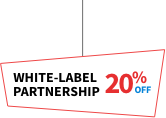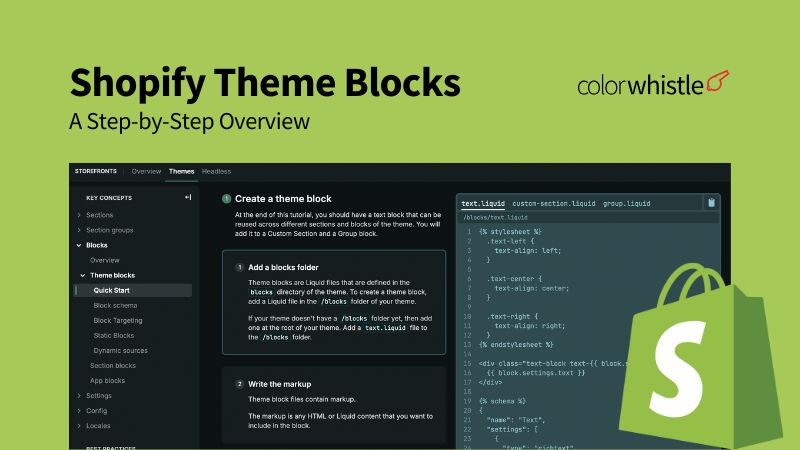Shopify’s theme blocks are revolutionary for customizing your store’s appearance and functionality without extensive coding knowledge. Whether you’re a store owner or a developer, mastering theme blocks is essential to delivering a unique and optimized user experience. In this guide, we’ll explore Shopify theme blocks in-depth, providing step-by-step instructions, best practices, and customization tips.
For businesses looking for a comprehensive Shopify development services to build or enhance their eCommerce stores, understanding the platform’s full potential is key. From designing visually stunning storefronts to optimizing performance, Shopify offers robust tools to help businesses thrive. To dive deeper into advanced features and best practices, read our blog, Shopify Plus Store Development Guide: A Step-by-Step Approach for 2025.
What Are Shopify Theme Blocks?
Shopify theme blocks are modular elements that allow merchants to customize their storefronts by adding, editing, and rearranging components. Each block represents a specific functionality or content type, such as images, text, buttons, or dynamic sections. These blocks are part of Shopify’s Online Store 2.0 framework, offering enhanced flexibility and control compared to earlier themes.
Why Use Theme Blocks?
User-Friendly Customization: Theme blocks enable merchants to customize layouts directly from the Shopify admin without needing technical expertise.
Enhanced Flexibility: Blocks can be added or removed dynamically, ensuring that store designs remain adaptable to changing business needs.
Improved Performance: Optimized code structure ensures faster load times and better performance metrics.
Getting Started with Theme Blocks
Step 1: Accessing the Theme Editor
- Log in to your Shopify admin panel.
- Navigate to Online Store > Themes.
- Click on Customize next to your active theme.
- The theme editor interface will open, displaying sections and blocks.
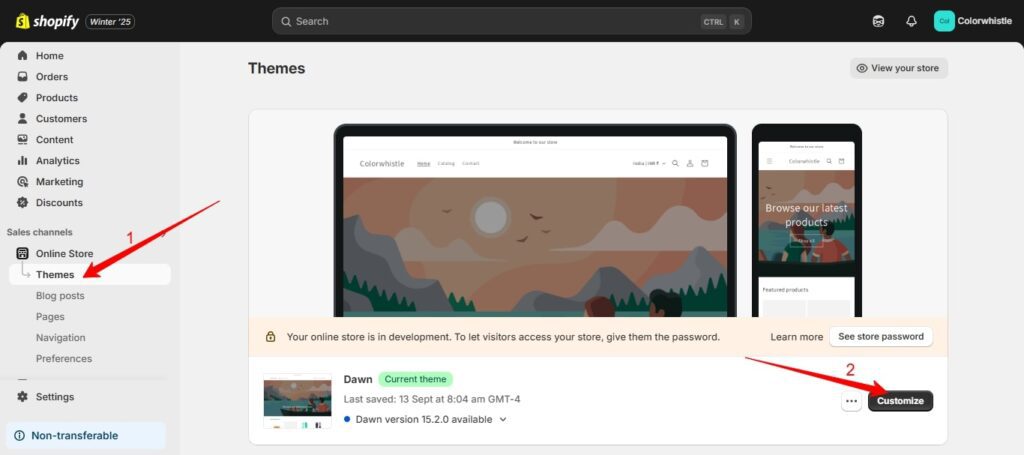
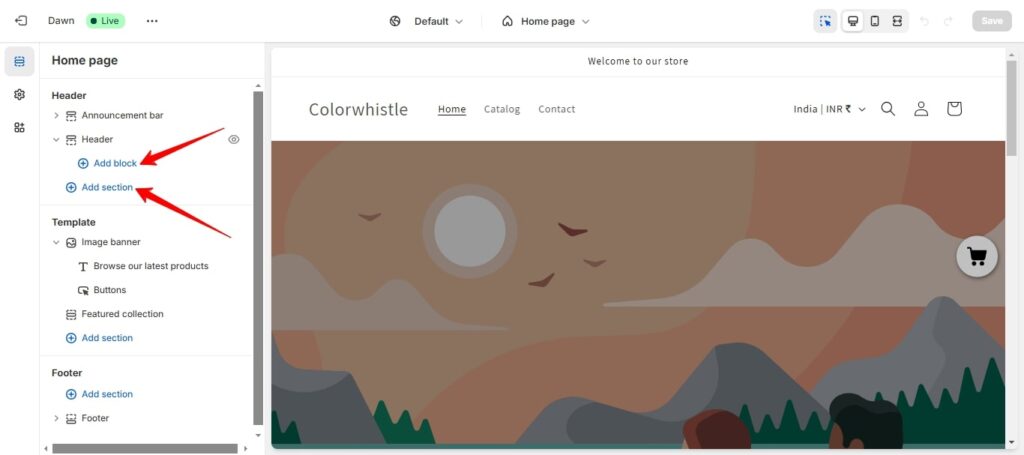
Step 2: Understanding Sections and Blocks
- Sections: High-level containers that group related blocks. For example, a homepage banner section might contain images, text, and button blocks.
- Blocks: Individual elements within sections. Each block represents a unique piece of content or functionality.
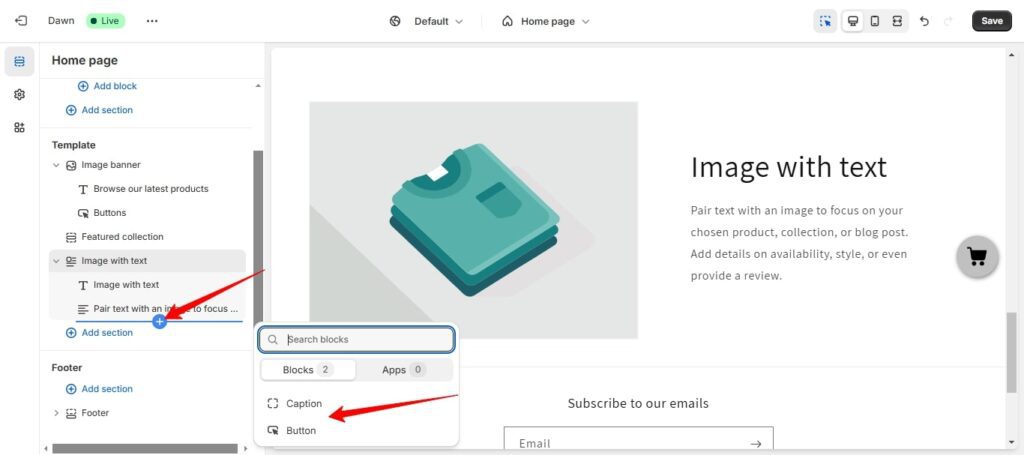
Also Read
Adding and Customizing Theme Blocks
Adding a New Block
- In the theme editor, select the section where you want to add a block.
- Click Add Block and choose the desired block type (e.g., image, text, product).
- Configure the block’s settings, such as text content, images, or links.
- Save your changes.
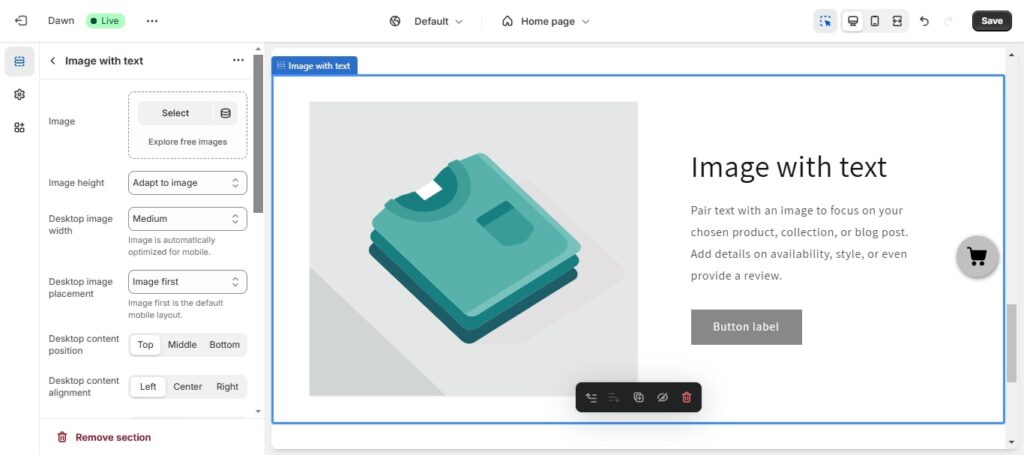
Editing Existing Blocks
- Click the block you want to edit.
- Modify the settings, such as colors, fonts, or alignment.
- Preview the changes in real time and click Save.
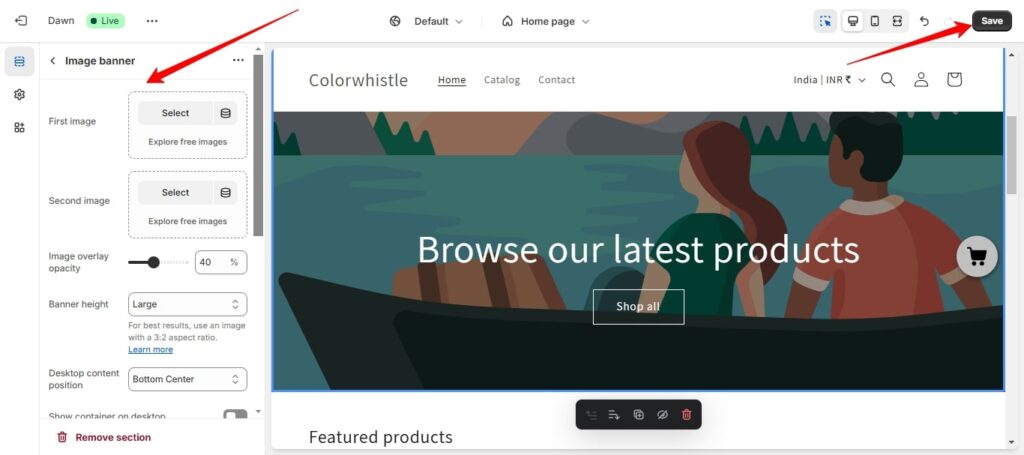
Advanced Theme Block Customization
Dynamic Content with meta fields
Metafields allow you to dynamically populate blocks with specific data, such as product specifications or unique offers.
A meta field in Shopify is a customizable data field used to store additional information about products, collections, customers, or other store entities. It enables merchants to add unique, dynamic content to their store that isn’t available by default, such as product specifications, size charts, or custom labels. Metafields are versatile tools that enhance storefront functionality and personalization.
Steps to Use Metafields:
1. Navigate to Settings > Custom Data in your Shopify admin.
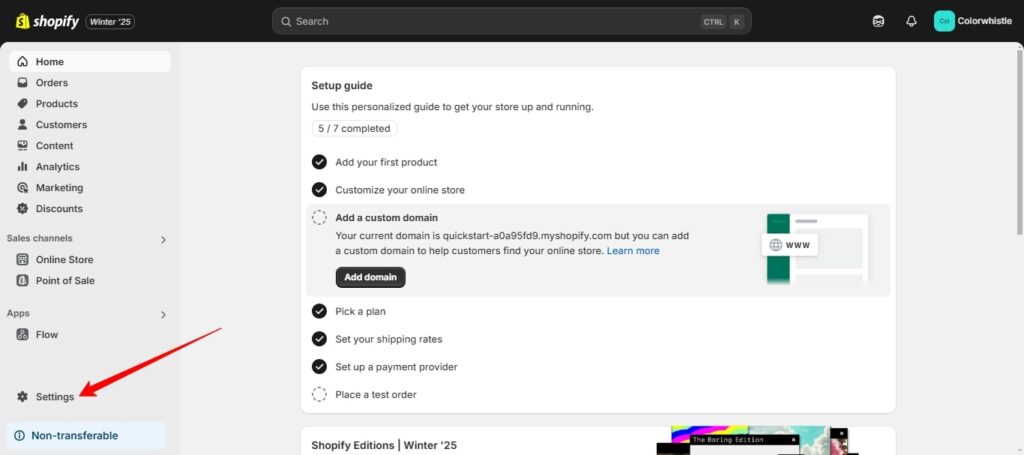
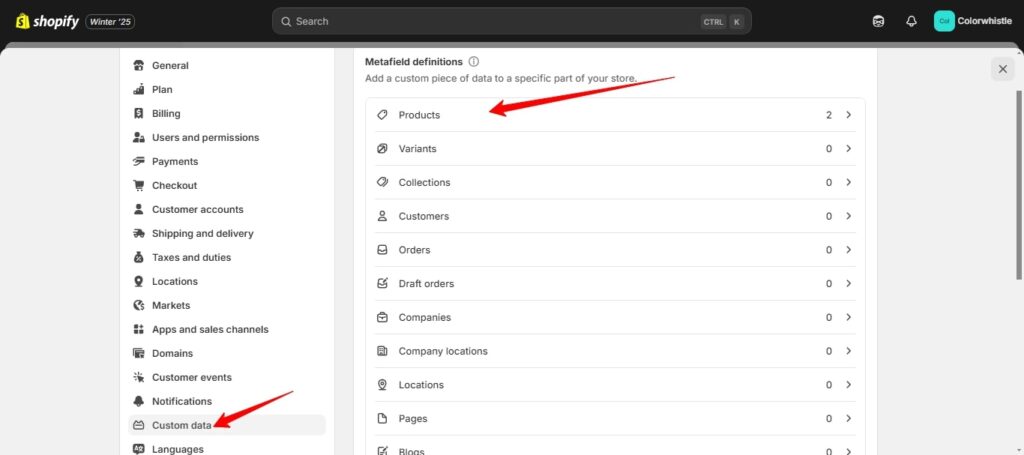
2. Create a new meta field definition for the desired content type and click the save button.
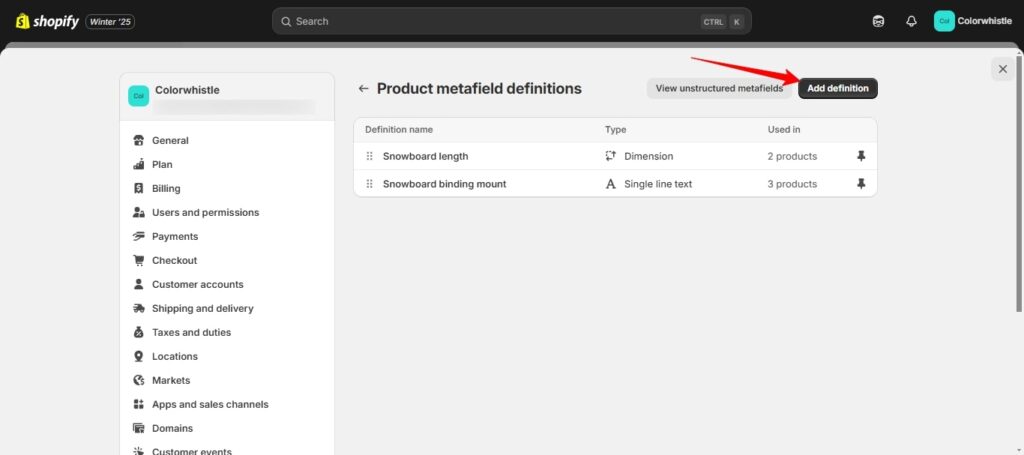
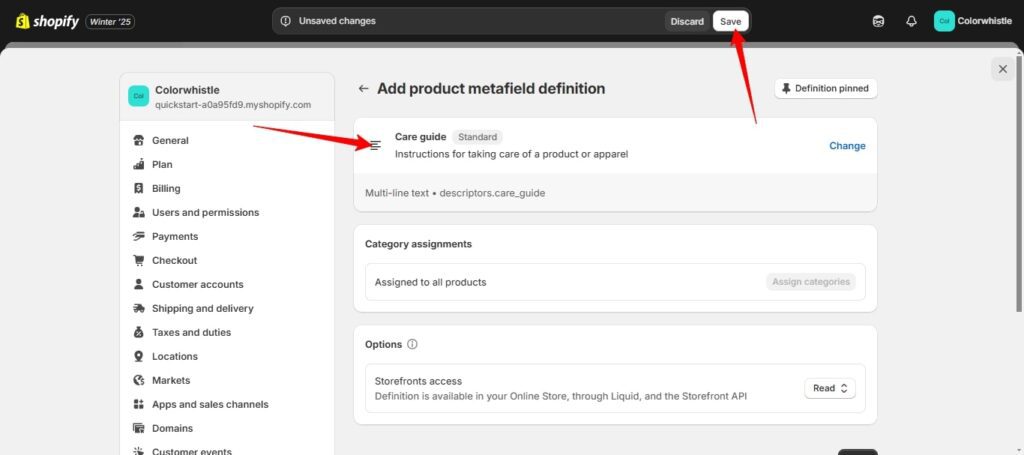
3. Add the content to the newly created custom field.
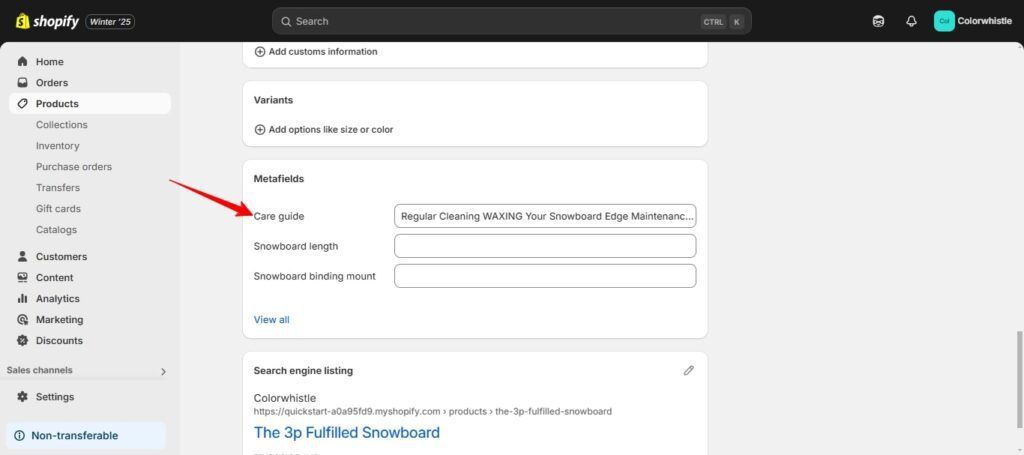
4. Link the metafield to a theme block in the editor. Select the block where you want to display the custom data.
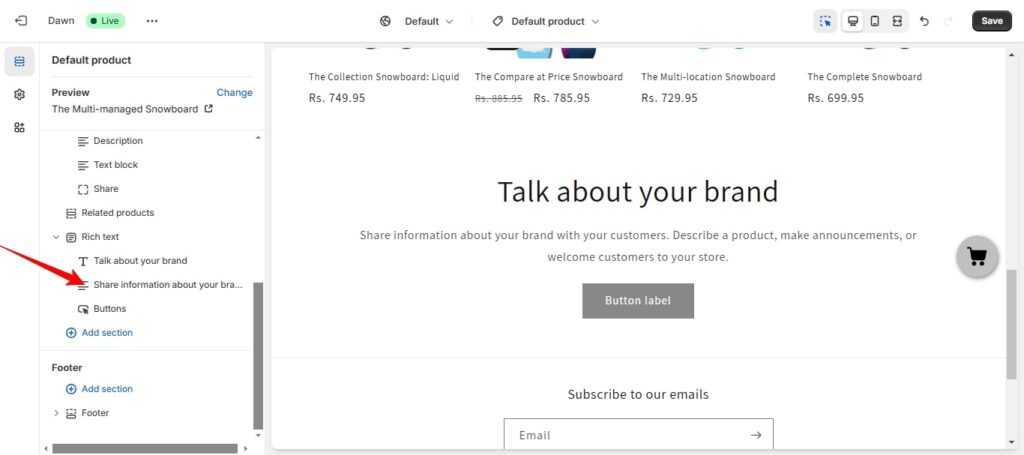
5. Click on the dynamic source button at top right of the input field and choose your custom field.
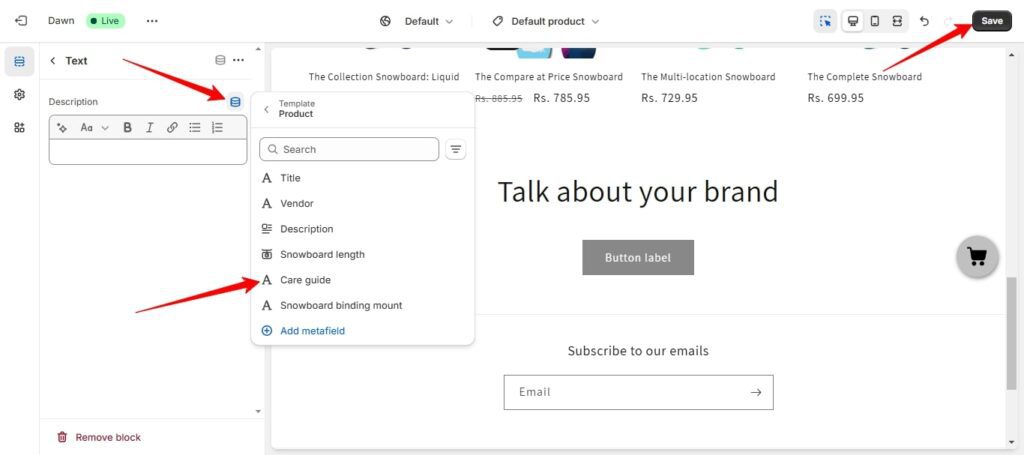
Also Read
Custom Liquid Blocks
For advanced users, Shopify’s custom Liquid block allows you to add bespoke functionality using Liquid code.
Steps to Use Custom Liquid Blocks:
- Open the theme editor and select a section where you want to add the Liquid block.
- Click Add Block and choose Custom Liquid from the list.
- Write your Liquid code directly in the editor. For example:
- Save the changes and preview the functionality.
Example:
{% if customer %}
<p>Welcome back, {{ customer.first_name }}!</p>
{% else %}
<p>Welcome to our store!</p>
{% endif %}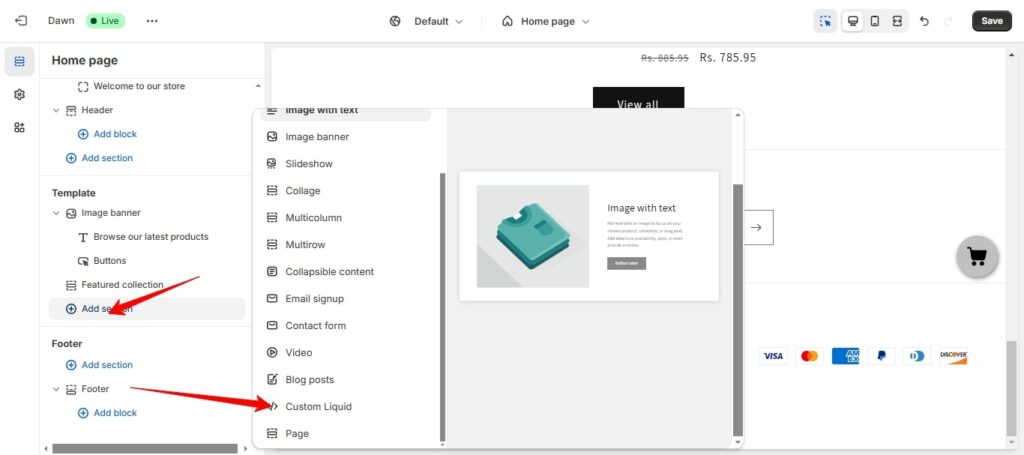
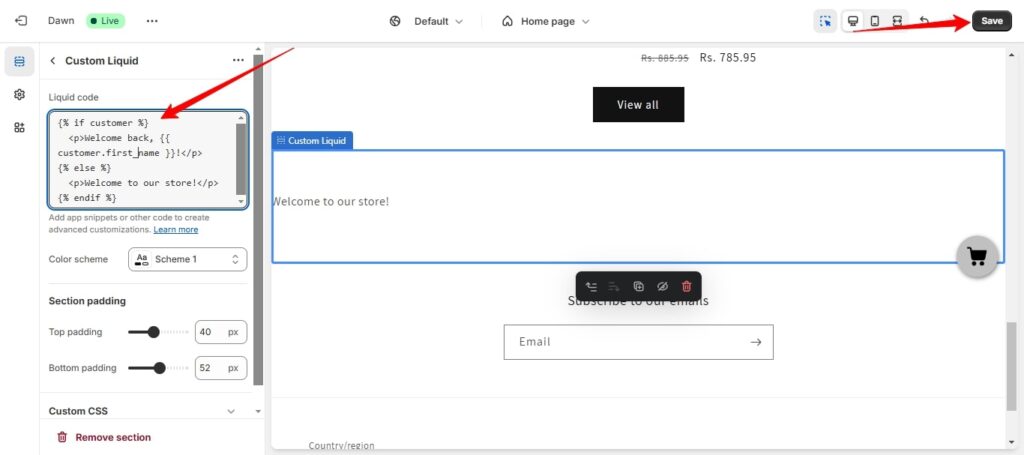
Managing Theme Block Settings
Rearranging Blocks
- In the theme editor, drag and drop blocks within a section to rearrange their order.
- Save the layout changes to see them reflected on the live store.
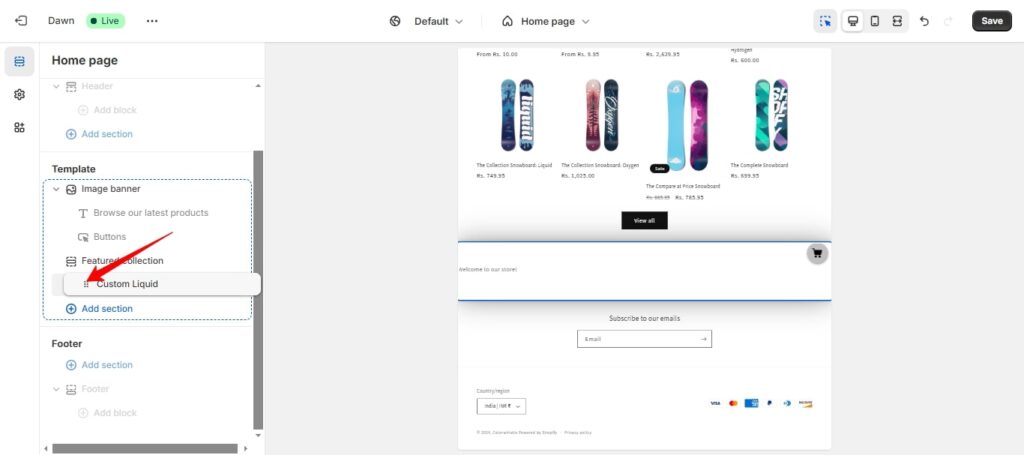
Duplicating Blocks
- Hover over the block you wish to duplicate.
- Click the duplicate icon (often represented by overlapping squares).
- Modify the duplicated block as needed.
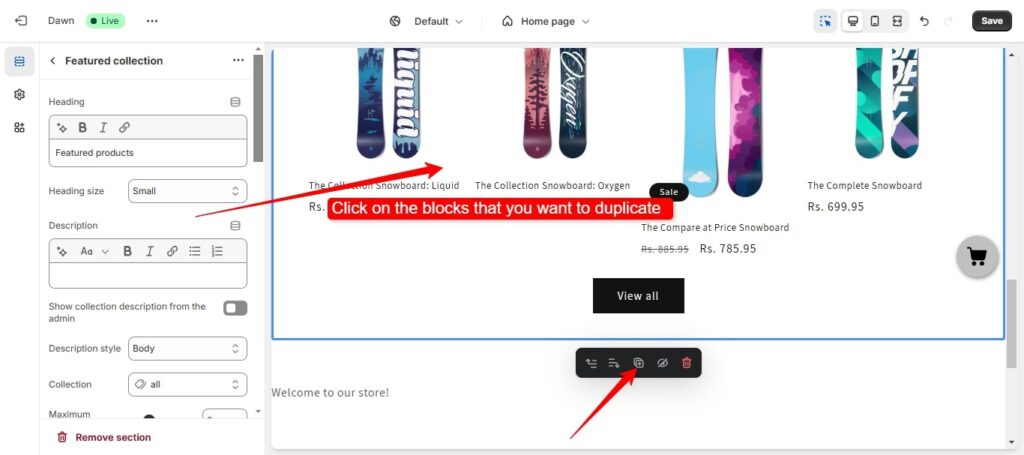
Best Practices for Using Theme Blocks
Maintain Consistency: Ensure uniform design elements across all sections.
Use High-Quality Media: Optimize images and videos for better performance and aesthetics.
Leverage Previews: Regularly preview changes to maintain design integrity.
Minimize Custom Code: Rely on built-in functionality to reduce technical debt.
Wrapping Up
Mastering Shopify theme blocks is a game-changer for anyone looking to build a visually stunning and highly functional e-commerce store. By leveraging the flexibility of blocks and combining them with advanced features like meta fields and Liquid code, you can create a store that stands out and drives conversions. Explore the theme editor, experiment with blocks, and unlock your store’s full potential today.
For those looking to develop a Shopify store, ColorWhistle has a dedicated Shopify development team. Feel free to contact us at +1 (919) 234-5140 our team is happy to guide you. Whether starting from scratch or enhancing an existing store, our experts can provide solutions to meet specific business needs.
What’s Next?
Now that you’ve had the chance to explore our blog, it’s time to take the next step and see what opportunities await!
